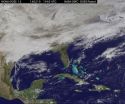(Press-News.org) The promise of personalized medicine, says University of Vermont (UVM) molecular pathologist Debra Leonard, M.D., Ph.D., is the ability to tailor therapy based on markers in the patient's genome and, in the case of cancer, in the cancer's genome. Making this determination depends on not one, but several genetic tests, but the system guiding the development of those tests is complex, and plagued with challenges.
In a February 12, 2014 Online First Journal of the American Medical Association "Viewpoint" article, Leonard and colleagues address this issue in conjunction with the concurrent release of an Institute of Medicine (IOM) Workshop Summary Report on "Co-Development of Genome-Based Therapeutics and Companion Diagnostic Tests." A professor and chair of pathology at UVM and Fletcher Allen Health Care, Leonard serves as a representative of the American College of Pathology on the IOM's committee on Translating Genomic-Based Research for Health, which organized the workshop and authored the report.
"Whenever a drug is developed that will target a pathway underlying disease, you need a test that says the patient will benefit," explains Leonard. "The development of companion diagnostic tests to determine if a patient will respond to a specific drug is very complex and needs to be changed, but will require changes from many stakeholders, including test developers, pharmaceutical companies, the Food and Drug Administration, the Centers for Medicare and Medicaid Services, and other payers."
The concept of what is called the FDA's "Companion Diagnostic Pathway," explains Leonard, allows for assessment of the test to predict a drug's benefit, within the same clinical drug trial to assess the new drug's effectiveness as a treatment. Cancer specialists are the primary users of these types of drugs and tests.
In their "Viewpoint" article, Leonard and colleagues Robert McCormack, Ph.D., and Joanne Armstrong, M.D., M.P.H., who represent the testing and medical insurance industry respectively, argue for stakeholders' support of "a strategy to co-develop and co-submit to the FDA a diagnostic test (companion diagnostic [CoDx]) that specifically targets a drug to patients predicted to respond." The authors share that "regulatory and business challenges . . . hamper the broader field of diagnostic testing" and not just the companion diagnostic pathway.
Currently, there are two pathways for test co-development – the FDA's in vitro diagnostic (IVD) tests and laboratory-developed tests (LDTs). Each has its own set of regulations and safety measures, as well as costs and insurance reimbursement eligibility. "The coexistence of two test development pathways is problematic, especially for co-developed CoDx tests, and requires clarification," writes Leonard and colleagues.
As an example of the current co-development CoDx environment, Leonard provides a potential scenario of a lung cancer patient for whom an oncologist may be considering several different drugs for treatment. "The pathologist has to do multiple separate CoDx tests, unless the institution does its own LDT that combines all the individual tests into a single test," Leonard explains, which is done in some pathology laboratories, predominantly using next-generation genetic sequencing. This combined test reduces the number of tests required, can conserve tissue and produce more medically-relevant results. However, insurance payers will not always cover the breadth of the tests.
"A university-based lab can run a single test to assess 28 genes, but an insurance company might only cover three of the gene tests," she admits.
The "Viewpoint" article addresses reimbursement and other economic obstacles, such as the investment environment for CoDx co-development and the costs associated with performing laboratory tests. The IOM Roundtable workshop explored these challenges, as well as discussed solutions to the companion diagnostic test co-development process.
"The goal was agreement on a unified plan, with every player doing their part," says Leonard, adding that "This issue needs thinking outside the box, with the patients at the center of the discussion."
INFORMATION:
'Viewpoint' addresses IOM report on genome-based therapeutics and companion diagnostics
2014-02-13
ELSE PRESS RELEASES FROM THIS DATE:
Rare bacteria outbreak in cancer clinic tied to lapse in infection control procedure
2014-02-13
CHICAGO (February 12, 2014) – Improper handling of intravenous saline at a West Virginia outpatient oncology clinic was linked with the first reported outbreak of Tsukamurella spp., gram-positive bacteria that rarely cause disease in humans, in a new report from the Centers for Disease Control and Prevention (CDC). The report was published in the March issue of Infection Control and Hospital Epidemiology, the journal of the Society for Healthcare Epidemiology of America.
"This outbreak illustrates the need for outpatient clinics to follow proper infection control guidelines ...
No such thing as porn 'addiction,' researchers say
2014-02-13
Journalists and psychologists are quick to describe someone as being a porn "addict," yet there's no strong scientific research that shows such addictions actually exists. Slapping such labels onto the habit of frequently viewing images of a sexual nature only describes it as a form of pathology. These labels ignore the positive benefits it holds. So says David Ley, PhD, a clinical psychologist in practice in Albuquerque, NM, and Executive Director of New Mexico Solutions, a large behavioral health program. Dr. Ley is the author of a review article about the so-called "pornography ...
Researchers create first global map of Ganymede
2014-02-13
PROVIDENCE, R.I. [Brown University] — Scientists, including Brown University geologists and students, have completed the first global geological map of Ganymede, Jupiter's largest moon and the largest in the solar system.
With its varied terrain and possible underground ocean, Ganymede is considered a prime target in the search for habitable environments in the solar system, and the researchers hope this new map will aid in future exploration. The work, led by Geoffrey Collins, a Ph.D. graduate of Brown now a professor at Wheaton College in Massachusetts, took years to ...
Penn geophysicist teams with mathematicians to describe how river rocks round
2014-02-13
For centuries, geologists have recognized that the rocks that line riverbeds tend to be smaller and rounder further downstream. But these experts have not agreed on the reason these patterns exist. Abrasion causes rocks to grind down and become rounder as they are transported down the river. Does this grinding reduce the size of rocks significantly, or is it that smaller rocks are simply more easily transported downstream?
A new study by the University of Pennsylvania's Douglas Jerolmack, working with mathematicians at Budapest University of Technology and Economics, ...
Happy couples can get a big resolution to a big fight -- mean talk aside
2014-02-13
Being critical, angry and defensive isn't always a bad thing for couples having a big disagreement — provided they are in a satisfying relationship. In that case, they likely will have a "big resolution" regardless of how negative they were during the discussion, according to a study by a Baylor University psychologist.
Until now, there have been two opposing ideas on negative communication in conflict: one is to refrain from using it, while the other suggests doing so is a natural part of productive interaction to resolve conflict. But findings from the latest research ...
Dartmouth study shows US Southwest irrigation system facing decline after 4 centuries
2014-02-13
Communal irrigation systems known as acequias that have sustained farming villages in the arid southwestern United States for centuries are struggling because of dwindling snowmelt runoff and social and economic factors that favor modernism over tradition, a Dartmouth College study finds.
The results reflect similar changes around the world, where once isolated communities are becoming integrated into larger economies, which provide benefits of modern living but also the uncertainties of larger-scale market fluctuations. The study appears in the journal Global Environmental ...
Prenatal vitamin A deficiency tied to postnatal asthma
2014-02-13
NEW YORK, NY (February 12, 2014) — A team of Columbia University Medical Center (CUMC) investigators led by Wellington V. Cardoso, MD, PhD, has found the first direct evidence of a link between prenatal vitamin A deficiency and postnatal airway hyperresponsiveness, a hallmark of asthma. The study, conducted in mice, shows that short-term deficit of this essential vitamin while the lung is forming can cause profound changes in the smooth muscle that surrounds the airways, causing the adult lungs to respond to environmental or pharmacological stimuli with excessive narrowing ...
Satellite video shows movement of major US winter storm
2014-02-13
VIDEO:
This animation of NOAA's GOES satellite data shows the progression of the major winter storm in the US south from Feb. 10 at 1815 UTC/1:15 p.m. EST to Feb. 12...
Click here for more information.
A new NASA video of NOAA's GOES satellite imagery shows three days of movement of the massive winter storm that stretches from the southern U.S. to the northeast.
Visible and infrared imagery from NOAA's GOES-East or GOES-13 satellite from Feb. 10 at 1815 UTC/1:15 p.m. EST to ...
Could restless sleep cause widespread pain in older folks?
2014-02-13
Researchers in the U.K. report that non-restorative sleep is the strongest, independent predictor of widespread pain onset among adults over the age of 50. According to the study published in Arthritis & Rheumatology (formerly Arthritis & Rheumatism), a journal of the American College of Rheumatology (ACR), anxiety, memory impairment, and poor physical health among older adults may also increase the risk of developing widespread pain.
Muscle, bone and nerve (musculoskeletal) pain is more prevalent as people age, with up to 80% of people 65 years of age and older experiencing ...
Sedation before nerve block increases risk, not pain relief
2014-02-13
New research suggests that sedating patients before a nerve block needed to diagnose or treat chronic pain increases costs, risks and unnecessary surgeries, and sedation does nothing to increase patient satisfaction or long-term pain control.
"Sedation doesn't help, but it does add expense and risk," says study leader Steven P. Cohen, M.D., a professor of anesthesiology and critical care medicine at the Johns Hopkins University School of Medicine. "In some places, every patient is being sedated. Our research shows it should be used very sparingly."
Nerve blocks, performed ...




